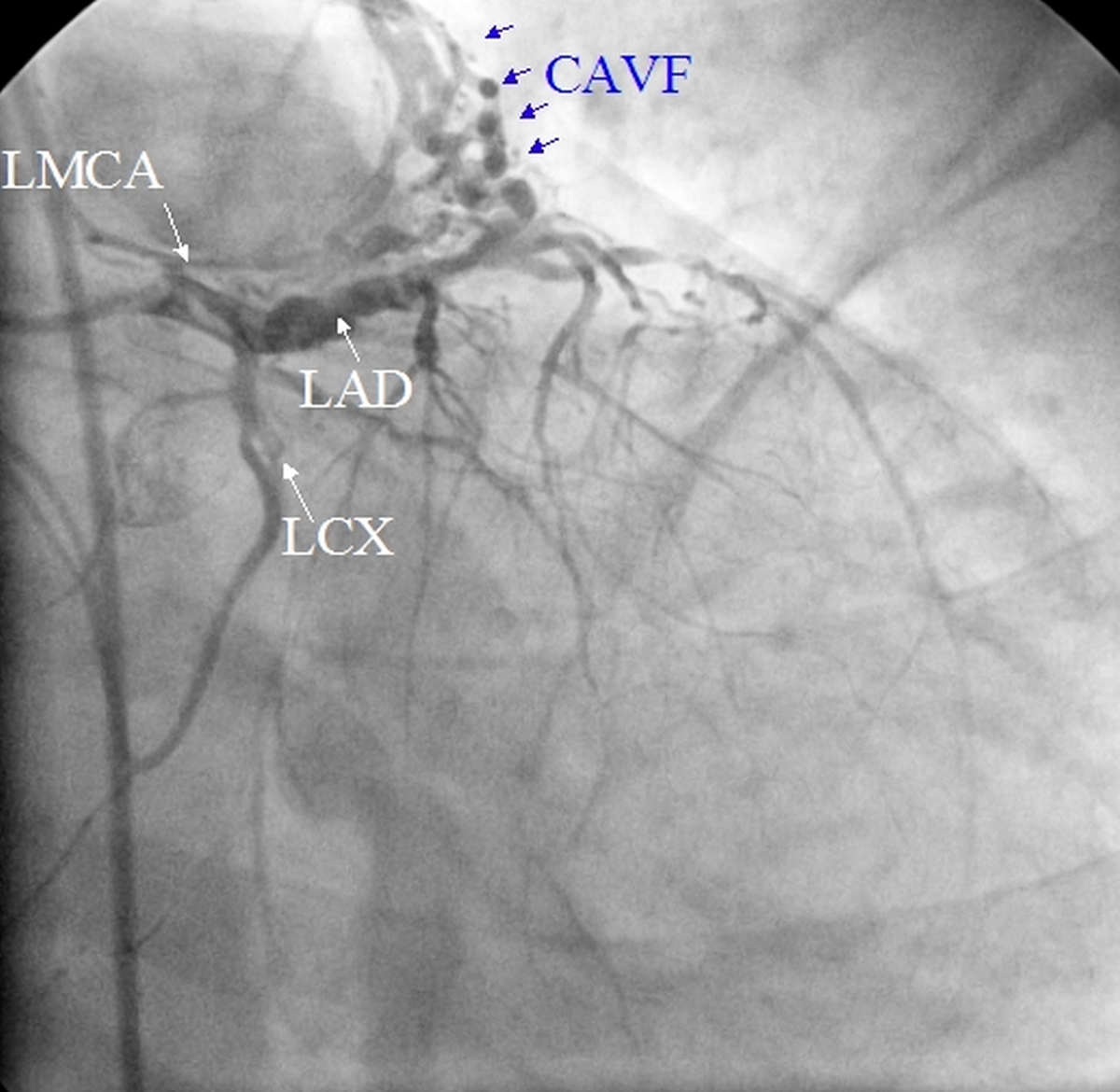Coronary arteriovenous fistula (CAVF)
Coronary arteriovenous fistula (CAVF)

Still frame from left coronary angiogram showing a coronary AV fistula arising from the left anterior descending (LAD) coronary artery (blue arrows). LMCA: left main coronary artery; LCX: left circumflex coronary artery. The leash of vessels arising from the LAD is draining into the pulmonary artery. Coronary arteriovenous fistulae can drain into the coronary veins or any of the cardiac chambers (coronary cameral fistula). Large CAVF can cause myocardial ischemia due to steal phenomenon in the territory of the vessel distal to the fistula. If the fistula is draining into the right sided chambers or pulmonary artery, it will constitute a left to right shunt. A rare case of coronary AV fistula involving all three coronary arteries and draining into the left ventricle presenting with diastolic murmur at the apex mimicking mitral stenosis has also been described [1]. Since the left ventricular systolic pressure is higher than that of aorta, flow occurs only during diastole, contributing to the diastolic murmur. CAVF should otherwise produce a continuous murmur.
Reference
- Sunil Roy TN, Sajeev CG, Francis J, Krishnan MN, Venugopal K. Three major coronary artery-to-left ventricular fistula: an unusual cause of a diastolic murmur at the apex. J Am Soc Echocardiogr. 2006 Nov;19(11):1402.e1-4.
